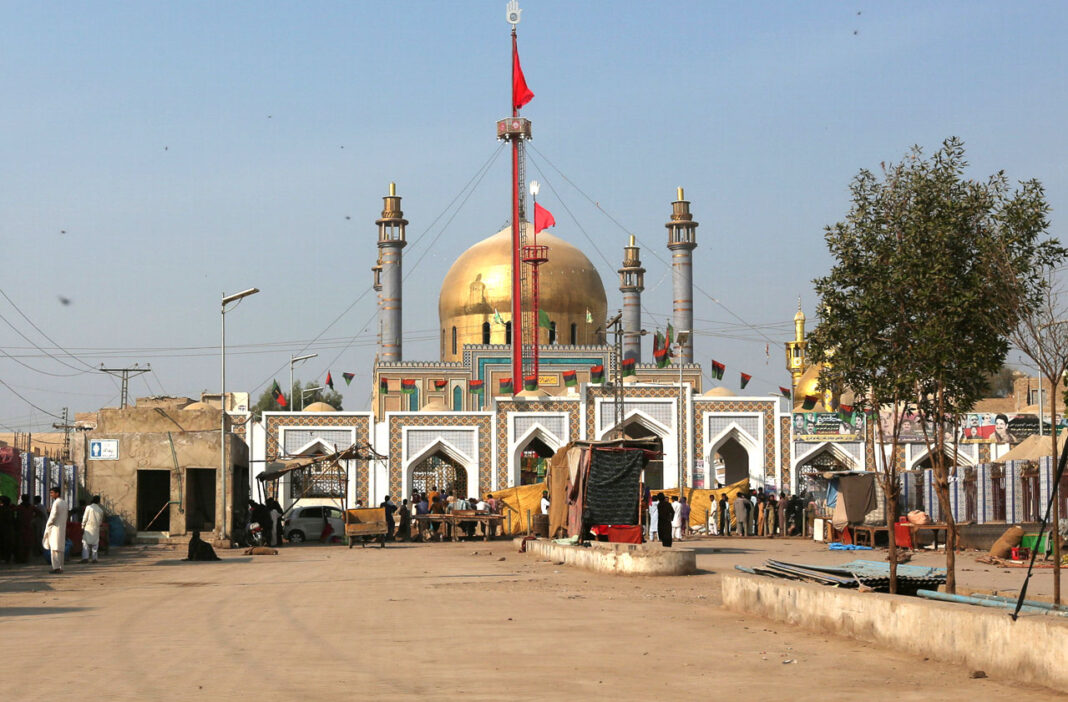By Syed Raza Hassan
SEHWAN SHARIF, Pakistan (Reuters) – At first light on Friday, just hours after a suicide bomber hit a packed crowd at a famous Pakistani shrine, a group of devotees descended on the gold-doomed mausoleum and danced in fervent celebration of their Sufi faith.
Thursday night’s bombing at the Lal Shahbaz Qalandar shrine, in southern Sindh province, killed 83 people in Pakistan’s deadliest attack in two years.
The attack was claimed by Middle East-based Islamic State, which has a small but increasingly prominent presence in Pakistan.
The shrine is one of Pakistan’s most revered holy sites and attracts up to a million visitors each year. It is perhaps best known for men and women practicing the ancient form of Sufi dance called the “dhamaal”.
Many devotees interviewed by Reuters on Friday made it clear that, no matter their frustration at authorities for failing to protect the shrine, they would keep coming to express their faith.
“This blast cannot dent the resolve of devotees from coming here or for that matter going to any other shrine,” said Iqbal Husain, 49, a resident of the dusty town of Sehwan Sharif, on the banks of the river Indus, where the shrine is located.
“Our life and death is with Lal Saain,” he added, referring to the 13th century saint in whose memory the bombed shrine was built around 800 years ago.
Behind him, the shattered visage of a part of the shrine was still visible.
A series of attacks over five days have hit all four of Pakistan’s provinces and two major cities, killing nearly 100 people and shaking a nascent sense that the worst of the country’s militant violence may be in the past.
The entry of the Islamic State into Pakistan’s crowded militant scene risks further attacks on Sufis because its ideology particularly includes punishment of minority sects and religions.
“If they think this blast will create fear among the Sufi people, they are badly mistaken,” said Nazar Husain Shah, who was visiting the shrine from a neighbouring district. “They have been bombing shrines for long; have people stopped going to shrines?”
Last November, an explosion ripped through another Sufi shrine, the Shah Noorani in southwestern Pakistan, killing at least 52 people. Islamic State also claimed responsibility for that attack.
“READY FOR ANOTHER ONSLAUGHT”
With its ancient hypnotic rituals, Sufism is a mystical form of Islam that has been practised in Pakistan for centuries.
Men and women beating drums, waving their arms and swirling together as they practice the dhamaal are a common Thursday night spectacle at the Lal Qalandar shrine.
But such rituals make Sufis an increasingly obvious target of Sunni militants who consider them heretics.
After Thursday’s attack, many devotees said they felt fearful but also vowed to keep up their Sufi practices and hoped for better protection from the authorities.
“We are ready for another onslaught, but that doesn’t mean the government should not secure our shrine,” said the custodian of the religious site, Mehdi Raza Shah.
He said he had expected the attack and asked local authorities to improve security. He also expressed frustration with the level of preparedness and training of policemen deployed to protect the shrine.
“Security is not up to the mark and if some serious attack occurred these cops who have no anti-terrorism training would have failed, and that is exactly what happened yesterday evening.”
As night fell, devotees continued to arrive at the shrine even though police and paramilitary personnel had kept entry into the building blocked throughout the day.
“Dhamaal will take place today, as per routine,” the defiant custodian said.
(Writing by Mehreen Zahra-Malik; Editing by Alex Richardson)







